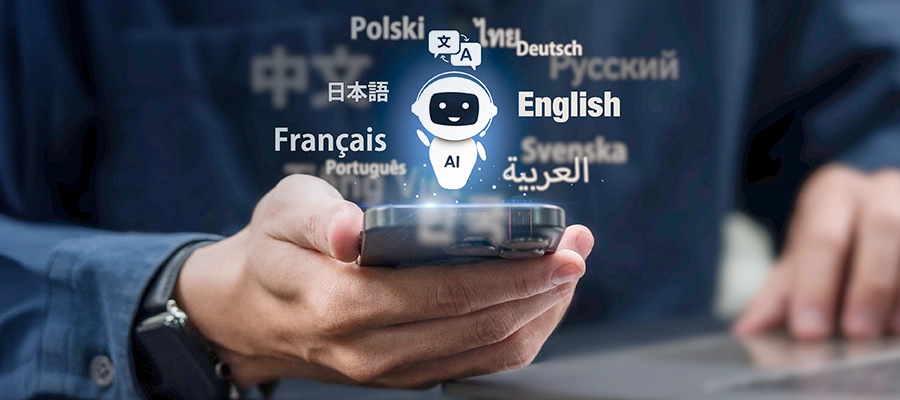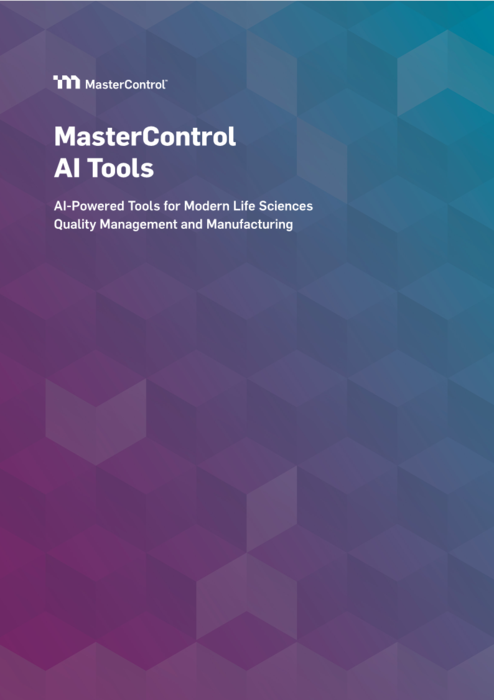GxP Lifeline
AI in Action: Optimising Document Management for Multilingual Compliance in Life Sciences

For quality and regulatory teams in life sciences, managing documentation across multiple languages is no small task. Standard operating procedures (SOPs), training records, batch documentation, and quality manuals must all be accurate and consistent across regions. Add stringent compliance requirements from global regulatory bodies (plus the need to maintain validated systems), and document control becomes challenging at best.
Fortunately, advances in artificial intelligence (AI) are helping life sciences manufacturers move beyond manual document processes. New AI-powered tools are streamlining how global teams manage, translate, and track controlled content without compromising data integrity or regulatory compliance.
In this article, we'll explore the innovative ways AI is transforming document management in multilingual life sciences environments. These strategies are already helping manufacturing companies reclaim hundreds of hours annually while improving consistency, audit readiness, and training effectiveness.
Interested in seeing how these tools work in practice? Download the MasterControl AI Tools guide for examples and real-world results in life sciences.
AI Tools That Simplify Training Assessments Across Languages
The effectiveness of training depends heavily on the quality of the supporting documentation. In global operations, you often have to create and distribute assessments across multiple languages and formats. In the past, quality and HR teams have had to manually translate SOPs, extract relevant content, and create quizzes. These tasks are time-consuming, inconsistent, and difficult to scale.
This is where AI-powered training document management can simplify matters dramatically.
Modern AI tools can automatically generate training assessments from controlled documents such as SOPs in multiple languages. These tools can:
- Analyse the content.
- Identify key procedures or compliance requirements.
- Generate exam questions that align with training goals.
As a result, organisations can roll out training programmes more quickly while maintaining global consistency.
The benefits are just all related to convenience. According to the MasterControl AI Tools data sheet, quality teams save approximately 300 hours per year by automating exam creation. That's time that can be reinvested in onboarding, competency tracking, or improving CAPA (corrective action/preventive action) resolution.
With manual processes eliminated, AI enables organisations to scale training efforts while maintaining quality and compliance across multilingual teams.
Automated Translation That Meets Regulatory Standards
Translation errors can be quite costly, both financially and from a regulatory standpoint. For life sciences organisations based in the UK and across EMEA, manual document translation often doesn't cut it. Generic translation engines lack the domain knowledge and validation controls required in regulated environments. On the other hand, outsourcing translation can be expensive and slow.
That's why purpose-built AI-assisted translation tools exist. They are designed specifically for life sciences with support for over 20 languages. These tools integrate directly with your quality and document control systems, allowing for full traceability and consistent terminology.
Let's examine what this might look like in action.
A quality manager in London needs to generate a validated French SOP. In the past, this task would have taken a minimum of a couple of days and back-and-forth communication with a freelance translator. Today, the translated SOP can be generated in just a few clicks. The AI solution handles the initial translation and flags uncertain content for subject matter review.
This single, standardised set of procedures across all regions is now accurately translated, fully auditable, and quicker to deploy. Distributed teams are aligned, errors are reduced, and the expectations of regulators and auditors are met.
Using AI to Track and Summarise Changes Across Versions
How about tracking changes? It's difficult enough across multiple document versions. Add in multiple languages, and you're facing one of the most complex elements of life sciences quality management. Even small revisions can introduce inconsistencies or lead to compliance risks if not documented properly.
Traditional change control methods (e.g., manual comparisons and spreadsheet trackers) are slow and prone to human error. These methods don't meet the needs of today's regulatory environment. Advanced AI tools automate document version comparison and summarisation.
Here's what that means:
- The tools detect and summarise changes across different versions of a document (even in translated formats).
- They highlight what's been altered, why, and how it impacts related procedures or compliance measures.
- Quality teams evaluate and approve changes faster, with a higher degree of confidence.
For multinational teams, AI-generated summaries standardise version histories and provide clear rationale for updates (critical during audits or CAPA reviews). That provides the clarity and traceability regulated environments need.
The automation of change tracking reduces administrative burden. However, go beyond the surface, and you'll find that it enhances regulatory alignment and ensures a strong compliance posture across regions.
A Guide to Adopting AI Document Tools in Regulated UK and EMEA Markets
Adopting AI tools in regulated environments (especially across the EMEA region) requires careful planning. Quality leaders should weigh these four key considerations prior to implementation for best results.
Data integrity, user validation protocols, language support for compliance documentation, and system interoperability all play crucial roles in ensuring successful, audit-ready adoption of AI solutions.
- Validated Environments
Any AI solution must operate within systems that comply with regulatory requirements such as EU Annex 11 or 21 CFR Part 11. MasterControl's AI tools are designed with these regulations in mind, supporting robust audit trails, electronic signatures, and validation controls.
- Multilingual Support
UK and EMEA-based companies often operate in multiple jurisdictions. As a result, tools must support translation and localisation. This ensures that terminology, date formats, and phrasing align with local expectations. MasterControl supports over 20 languages with built-in quality controls.
- System Integration
To be truly effective, AI tools must integrate with your quality management system (QMS), document control platform, and training modules. Seamless integration is key for consistency across workflows. It helps teams avoid discrepancies between localised and master documents.
- Regional Regulatory Guidance
Of course, EMEA regulatory landscapes vary by country. From GDPR (General Data Protection Regulation) compliance to local MHRA (Medicines and Healthcare Products Regulatory Agency) expectations, AI systems must be implemented with regional regulatory frameworks in mind. The MasterControl AI Tools Life Sciences guide provides practical implementation insights tailored to support quality professionals across EMEA.
AI Is Reshaping Quality Document Management
Artificial intelligence is a strategic necessity for life sciences organisations operating in complex, multilingual environments. AI-powered document management tools help you do everything from manage SOPs across sites and prepare for your next inspection. It's all about maximizing tools to do more with less (without compromising compliance).
Quality teams that leverage MasterControl's purpose-built AI tools are achieving the following:
- Hundreds of hours saved annually on document creation, translation, and change tracking.
- Improved consistency across languages and regions.
- Reduced risk of human error.
- Enhanced audit readiness and regulatory compliance.
Ready to modernise your document management with AI? Download the MasterControl AI Tools data sheet to see how quality leaders across EMEA are implementing smarter, more agile systems.

